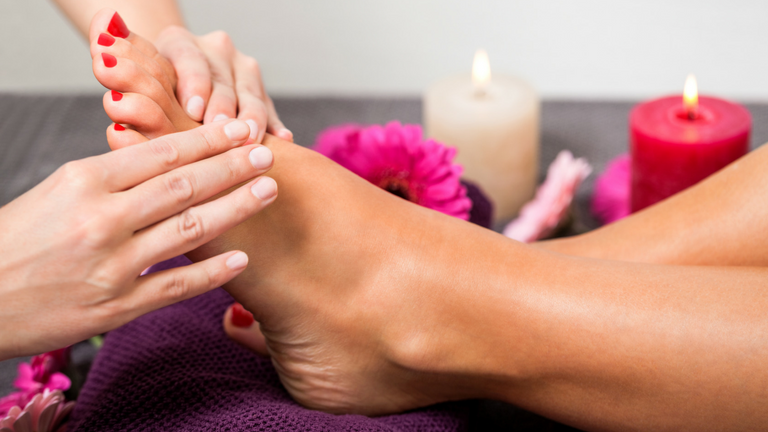
In the world of alternate medicine and alternative healing methods, reflexology stands apart as a interesting and increasingly popular strategy. This old method, rooted in the idea that certain factors on the hands, feet, and ears represent different body organs and systems of the body, has been obtaining grip in the Western globe as a corresponding treatment for various health and wellness concerns.
Comprehending the Foundations of Reflexology Reflexology is based upon the concept that there are reflex areas in the feet and hands that are connected to all components of the body. Professionals believe that using pressure to these certain points can promote wellness in the equivalent organs through energy paths. While the precise devices are not totally comprehended by contemporary scientific research, many individuals report considerable gain from reflexology sessions.
The theory behind reflexology suggests that the body is divided into ten vertical areas, each corresponding to fingers and toes. By applying stress to details points within these zones, reflexologists aim to launch blocked energy and advertise recovery.
The Historical Journey of Reflexology The beginnings of reflexology can be traced back thousands of years. Old Egyptian tomb paintings dating back to 2330 BC portray what appears to be foot and hand massage. Conventional Chinese medicine has actually long identified the connection between pressure points and the body’s total wellness. Nevertheless, modern-day reflexology as we understand it today was developed in the very early 20th century by Dr. William Fitzgerald and later on fine-tuned by Eunice Ingham, usually described as the “mom of reflexology.”
The Reflexology Process: What to Expect A regular reflexology session starts with an examination where the specialist goes over the client’s health and wellness history and existing problems. The customer then eliminates their shoes and socks and sits comfortably or rests. Utilizing 東京 , fingers, and in some cases tiny devices, the reflexologist uses differing levels of pressure to details points on the ears, feet, or hands.
The session generally lasts between 30 to 60 mins, during which clients commonly report feeling deeply unwinded. Some people experience sensations in other components of their body as various factors are promoted, which reflexologists take energy relocating via the body.
Prospective Benefits of Reflexology While clinical research study on reflexology is recurring, many individuals report a range of take advantage of normal sessions. These might include:
Decreased stress and anxiety and anxiety Improved flow Enhanced sleep quality Relief from migraines and headaches Alleviation of digestive system issues Boosted energy degrees Support for hormone balance It’s crucial to keep in mind that reflexology is normally considered a complementary treatment and should not replace standard clinical therapies. Many find it a useful enhancement to their overall wellness regimen.
Reflexology in Modern Healthcare As interest in all natural health methods grows, reflexology is discovering its location in numerous healthcare settings. Some medical facilities currently provide reflexology as component of their integrative medicine programs, specifically for individuals managing chronic pain, cancer-related signs and symptoms, or anxiety. Many medspas and health centers likewise include reflexology in their solution offerings, acknowledging its possibility for anxiety relief and leisure.
Research study released in the Journal of Complementary and standard Medicine suggests that reflexology might be reliable in minimizing pain and boosting leisure, making it a promising corresponding therapy for various conditions.
DIY Reflexology: Self-Care at Home While expert sessions can be helpful, some standard reflexology strategies can be exercised in the house. Simple foot rolls using a tennis sphere or reflexology tools can help boost factors on the feet. Many individuals locate this a relaxing method to loosen up at the end of the day or to ease foot pain from meaning extended periods.
The Future of Reflexology As extra study is performed, reflexology may gain additional recognition in the clinical community. Existing researches are exploring its potential applications in discomfort administration, stress and anxiety reduction, and also as a helpful therapy for clients going through cancer treatment. The non-invasive nature of reflexology, combined with its prospective to advertise relaxation and general health, makes it an eye-catching alternative for those seeking natural approaches to health and wellness maintenance.
Whether checked out as a science-based therapy or an all natural art kind, reflexology uses an unique technique to understanding and sustaining the body’s all-natural recovery processes. As we remain to discover the elaborate links in between different parts of our body, techniques like reflexology remind us of the power of touch and the capacity for healing that exists within our very own hands and feet.
Understanding the Foundations of Reflexology Reflexology is based on the concept that there are reflex areas in the feet and hands that are linked to all parts of the body. Modern-day reflexology as we understand it today was developed in the early 20th century by Dr. William Fitzgerald and later on fine-tuned by Eunice Ingham, frequently referred to as the “mommy of reflexology.”
The Reflexology Process: What to Expect A common reflexology session begins with an appointment where the practitioner reviews the client’s health background and existing issues. Reflexology in Modern Healthcare As interest in alternative wellness methods expands, reflexology is finding its place in numerous health care settings. DIY Reflexology: Self-Care at Home While professional sessions can be useful, some basic reflexology methods can be practiced at home.
